Welcome to project management 101. Project management can seem like a daunting discipline, but once you get a grasp of the fundamentals and combine that with some intuition, you’ll be on your way to leading successful projects, no matter your situation.
Maybe you’ve been unexpectedly assigned to lead a project and a big promotion is on the line, or maybe you’re a team member who wants to better understand their role in the project. Regardless, we’re going to give you a brief overview of the most important project management basics and fundamentals that any project manager needs to know about.
If you need more help with project management, check out all of our resources and project management tools for reaching your full potential. ProjectManager is powerful project management software that can be used by both experienced and beginner project managers and team members to manage projects. Get started for free today.
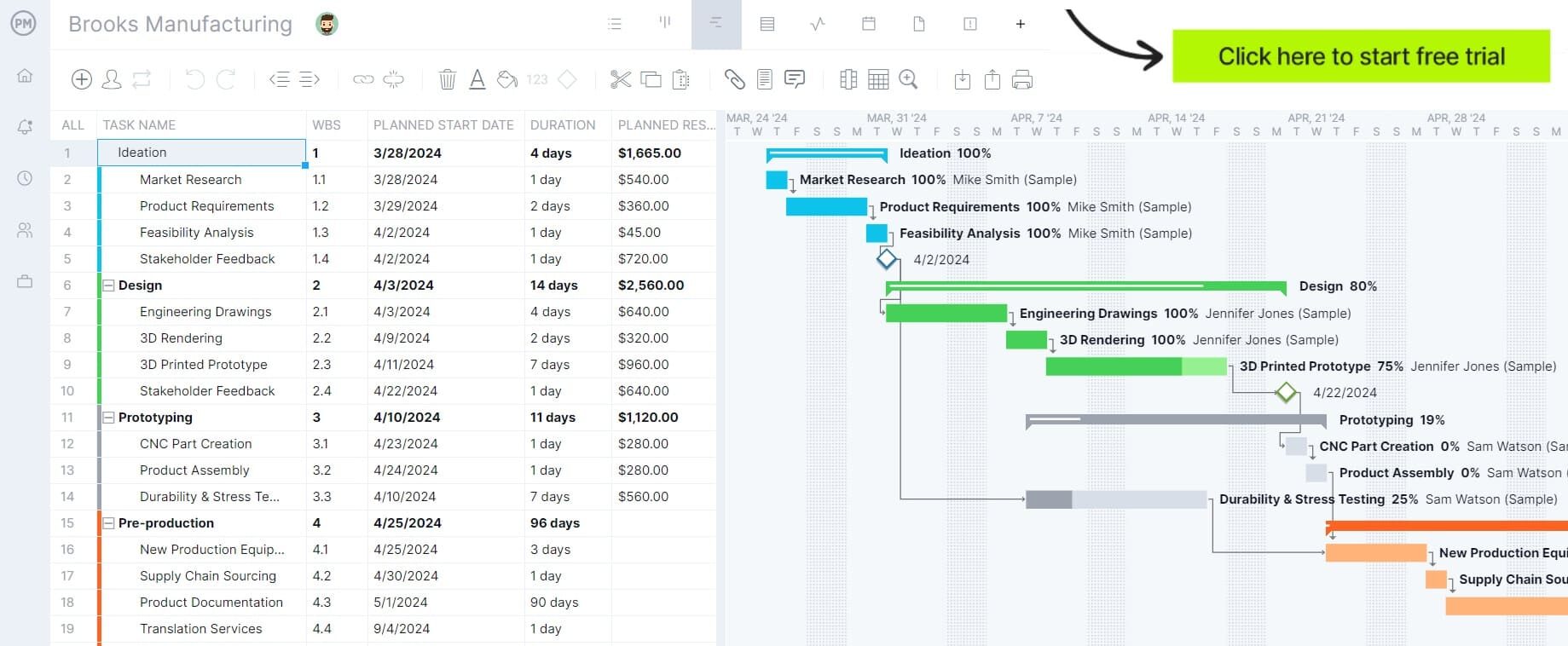
Project Management Basics, Fundamentals & Concepts
First, let’s explore the most fundamental project management concepts, starting with the definition of a project, which allows us to understand what project management is and why it’s so important for any type of organization. Then we’ll move on to other fundamental definitions.
1. What Is a Project?
A project is a sequence of tasks that lead toward a singular goal. Projects have boundaries, such as the time, people and resources needed to complete the project. These all depend on what results you want to achieve and when you want to achieve them.
Those results are your outcome, which produces deliverables. They’re anything that’s produced or provided because of the project. Deliverables can be both the result of the project itself, but also the results of the process of the project, such as the project plan, reports or other documents. Projects are made up of deadlines. Each task and phase of the project has a due date, which means your project has a schedule.
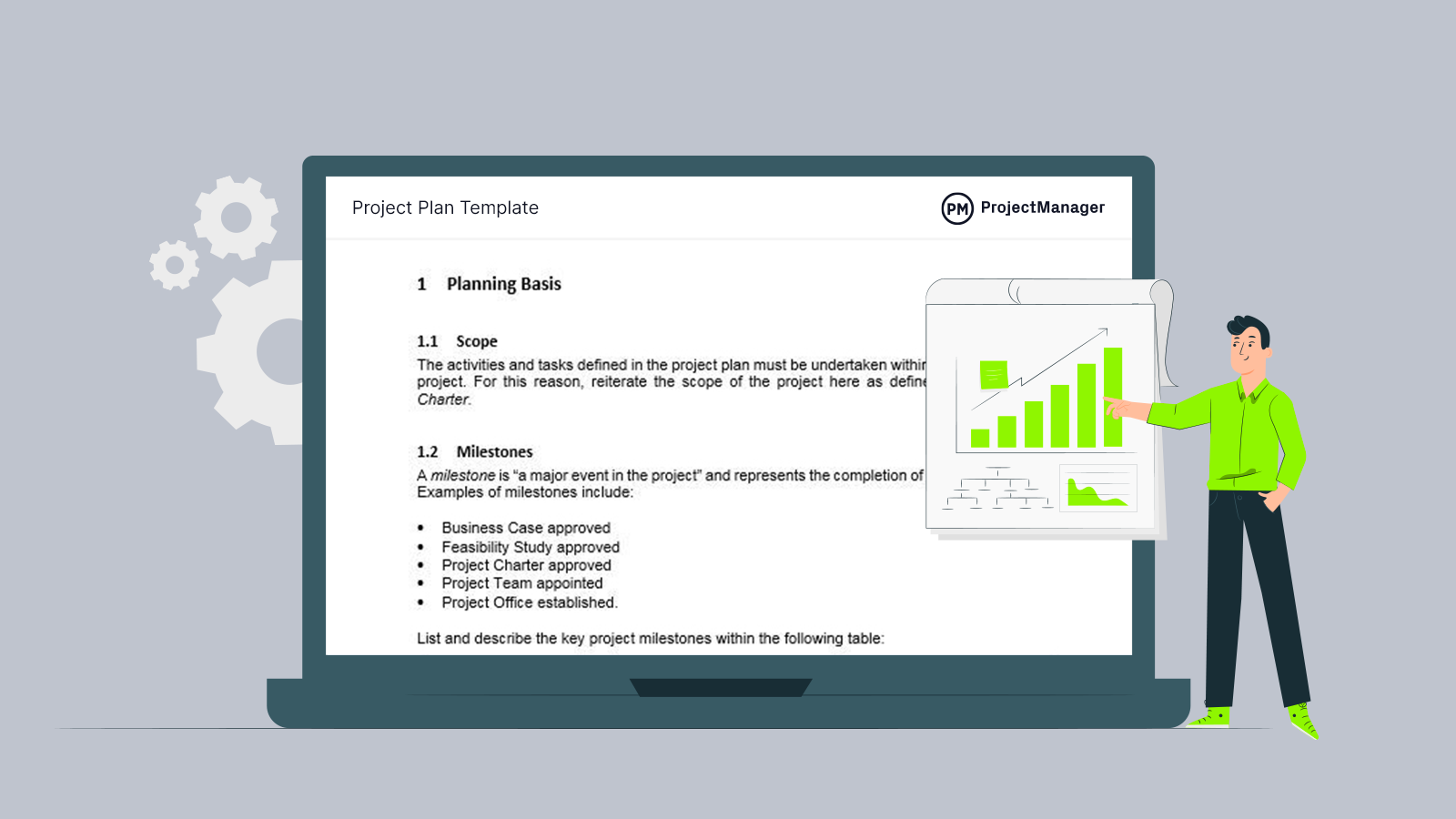
Get your free
Project Plan Template
Use this free Project Plan Template to manage your projects better.
Get the Template
Budgets are also part of a project. You need money to pay for the resources to meet the demands of the project within the time allotted. Typical resources include the workforce, work supplies and equipment. A project budget outlines these expenditures. Now that we’ve determined what a project is, we can define project management as a discipline.
2. What Is Project Management?
Project management is a discipline that consists in using project management methodologies, tools and techniques to manage the project life cycle, which is a set of stages that are common to every project. While there are several project management roles within a project team, the project manager is usually in charge of overseeing the process of planning, executing and monitoring projects from start to finish.
Let’s review four foundational project management concepts that shape the project management discipline: the project life cycle, the triple constraint of project management, the project management knowledge areas and some of the different project management methodologies you can use as a project manager.
Why Is Project Management Important?
Every business, non-profit or any other type of organization needs to execute projects, which makes project management important for any organization.
Effective project management not only means that your team will deliver projects on time and under budget but also brings other organization-wide benefits such as increased productivity, reduced costs, better leadership and motivated employees.
In a nutshell, project management helps organizations become more efficient through planning and monitoring of tasks, goals and team performance.
3. What Is a Project Manager?
A project manager is the person in charge of the project. That much is clear, but that might be too simple of an explanation. The project manager leads the project through every phase. That means they’re responsible for first selling the project to stakeholders, then planning and defining the scope of the project.
What Does a Project Manager Do?
Project managers figure out all the tasks necessary to achieve the project goals, then they sequence those tasks into a schedule. Those tasks and schedules are then given the resources needed to achieve the project’s objectives. That means assembling a team, getting the tools and supplies they need and securing a site and the necessary resources.
The project manager is also the person who creates the project budget to pay for those resources. They’re responsible for managing all the documentation and then archiving those documents at the end of the project. They also manage risk and monitor project progress to make sure people are working unobstructed and within the schedule and budget.
So essentially, anything project-related is under the purview of the project manager. They are the leaders of the project and manage the teams that are executing the project plan. However, they’re not the boss. The project manager has sold the idea of the project to a sponsor or stakeholder, and they report to them on the project’s progress.
Therefore, a project manager is a very well-organized person, one who is goal-oriented and passionate about the process. A project manager must work well under pressure, provide leadership and know how to motivate people to do their best. Beyond people skills, communication skills are paramount. And they must know the methods and techniques that help deliver projects successfully.

4. Project Life Cycle
The project life cycle describes the five phases all projects go through. Here’s a quick overview of each.
- Initiation: Here’s where you set out the project scope, the goals, the organization of the project, its business case, its constraints, who the stakeholders are, what the risks are, the project controls, the reporting framework, etc.
- Planning: This is where you build the roadmap to take you from point A to Point B, which means creating a schedule of the tasks, deadlines and resources needed to complete everything on time.
- Execution: The project begins and the project plan is put into action.
- Monitoring & Controlling: To ensure the project is proceeding as planned, you need to set up mechanisms for monitoring progress. If the project isn’t proceeding as planned, work to control and resolve issues before they become problems.
- Closing: Projects are temporary endeavors, so they eventually come to an end and need to be formally closed. But it’s not as simple as producing deliverables; there’s paperwork to sign off on, resources to reallocate and other loose ends to tie up.
5. The Triple Constraint
Regardless of the method you use to manage a project, understanding the triple constraint is key. All projects are carried out with certain constraints. These are cost, time and scope. That is, projects must come in within budget, be delivered on time and meet the agreed-upon scope.
If you think of the triple constraint as a triangle, then if you’re managing the cost, time and scope, the triangle is quality. So, if you’re managing the cost, time and scope of the project, then you’re going to meet the customer’s quality requirements.
But the triple constraint is more than that; it’s like the ballast on a ship and keeps the project balanced no matter how rough the waters get. For example, if you need more money, then you’re going to have to adjust the time or scope of the project. Accordingly, if you’re short on time, then the budget or scope will have to change.
If you keep the triple constraint in mind while managing your project, along with the project phases and management tools, then you have the means to make the necessary adjustments that can keep the project on track. It’s the formula for success.
6. Project Management Knowledge Areas
Project management knowledge areas can be simply defined as categories that describe the different types of work that are done by project managers and team members to complete projects successfully. Project managers should be very knowledgeable in each of these 10 project management knowledge areas so they can guide teams through the project life cycle and make sure the triple constraint is well balanced.
- Project integration management
- Project scope management
- Project time management
- Project cost management
- Project quality management
- Project human resource management
- Project communications management
- Project risk management
- Project procurement management
- Project stakeholder management
If you’re interested in this topic, you can check out our project management knowledge areas blog for more information on these key principles of project management.
7. Project Management Methodologies
There are many ways to structure a project’s process, and project managers are experts in one or more of them. The most traditional is called waterfall, which follows a linear approach to managing a project, breaking down the project into a very structured sequence.
A different approach that is gaining popularity is called Agile, which comes from software development. It’s a process that works in small phases or cycles called “sprints,” and lends itself to small teams. Like its name, the process embraces change and is flexible and is continuously changing direction according to client feedback.
8. Project Management Tools
As you may have noticed, projects can be complicated. You plan, schedule and monitor to make sure all elements of the project are running smoothly. The more tools in hand, the more manageable the project and your tasks. Project management software can contain all the tools needed to help project managers and team members with every aspect of their projects.
When project management software is cloud-based, data and collaboration can happen in real-time, which provides a more accurate picture of the project and helps in decision-making. Plus, project management software often contains many of the major tools for managing projects, like those discussed below.
Dashboards
Project dashboards gather metrics from all parts of the project. Those numbers are then displayed in easy-to-read charts and graphs, giving a manager or a team member a live look at project progress and data. Dashboards can also assist in reporting. Running a project means reporting to the project’s sponsors on the progress of the project. Graphs and charts can be filtered to deliver just the data you need for targeted reports.
Gantt Charts
Online Gantt charts are great tools for planning because they display your task list graphically over a timeline. Each task has a deadline, which creates a line marking the start and finish of that task. Tasks can then be linked, if dependent.
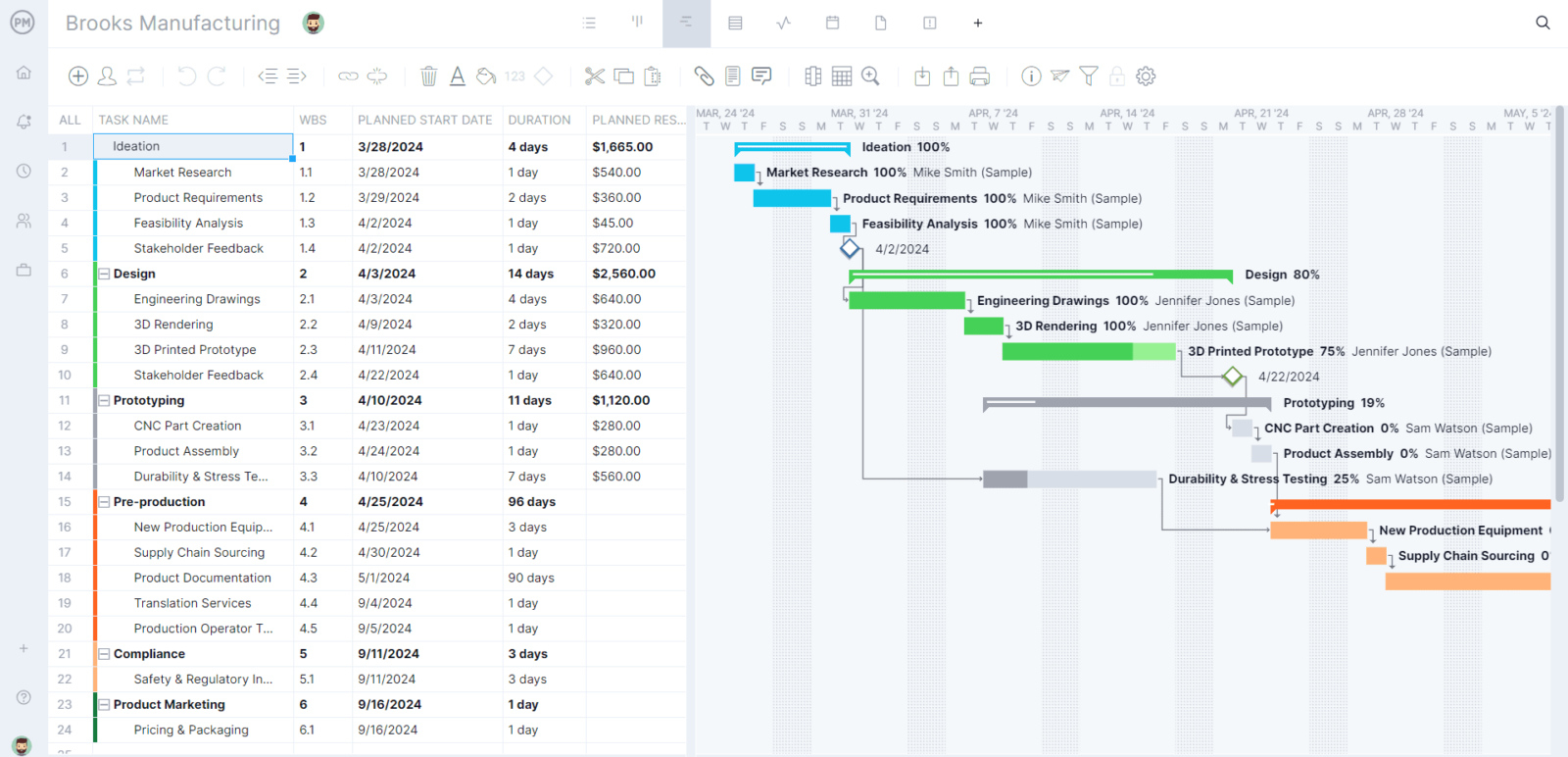
Ideally, you can share the Gantt with your team and track their progress as they update their statuses. With some Gantt charts, the bar between the start and finish dates will fill in as the team works on their tasks, and if you need to change the schedule, you can simply drag and drop the bar to reflect the new due date.
Task Management Tools
There are task management tools that allow you to create to-do lists for yourself and assign tasks to team members. These tasks can sometimes have notes, files, links and images attached that relate to the task, and team members can dialogue and collaborate at the task level. You can also automate email notifications to know when a task is completed and to remind people of impending deadlines.
Timesheets and Workload Tools
In terms of managing the people working on the project, which can be a project by itself, there are timesheets. These are online documents that make it easy for each employee to track and record their hours worked, and they can be filed to the manager when complete for sign-off.
When it comes to managing the workload, resource allocation tools allow you to see at a glance if you’ve allocated your resources properly across the project so that everyone is working and the workload is balanced. In some cases, you can run reports from your workload management software, too.
9. What Is Project Management Software?
Project management software does the heavy lifting to allow managers to easily plan, schedule and track projects in a much faster and more efficient manner than traditional methods such as drafting project schedules by hand.
Project management software can be defined as a type of software that incorporates the project management tools mentioned above, along with other features such as timesheets, real time team-collaboration or unlimited file storage, so that project managers and teams can keep track of projects in one central platform.
However, not all project management software works in the same way. There are many options on the market and while some are easy to use, they might not provide all the planning, scheduling and tracking tools that you need.
10. Key Project Management Documents
Here are some important project management documents to keep in mind.
- Project Charter: This is a crucial project document that outlines the project’s scope, objectives, stakeholders and overall framework. It helps guarantee clarity, alignment and accountability to contribute to its success.
- Project Schedule: The project schedule helps manage tasks, timelines and resources more effectively. It includes tasks, activities, start and end dates, milestones, resource allocation and more.
- Project Budget: A project budget is essential for tracking expenses to help keep the project on track. It consists of direct and indirect costs, fixed and variable costs, revenue and contingencies.
- Project Scope Statement: This helps ensure that stakeholders are aligned and can contribute to the project’s successful completion. It clarifies objectives, defines deliverables, establishes boundaries and aligns stakeholders.
- Project Management Plan: The project management plan outlines how a project will be executed, monitored and controlled. It helps align the project team and stakeholders on goals, processes and responsibilities.
- Project Status Report: This is a key communication tool that offers stakeholders updates on the project’s progress, challenges and next steps.
11. Project Management Certifications
Several important project management certifications can increase your skills and credibility.
- Certified Associate in Project Management (CAPM): Offered by the Project Management Institute, this certification is ideal for those new to project management. It offers foundational knowledge of various project management processes.
- Project Management Professional (PMP): Another PMI certification, this is a globally recognized certification that showcases one’s expertise in project management practices and principles. In addition to experience, this certification also requires education.
- Certified Project Director (CPD): This is a professional credential that targets project managers who want to develop advanced skills and knowledge in leading and directing projects. Candidates need 5-10 years of project management experience, a bachelor’s degree or equivalent and completion of advanced project management training.
- Google Project Management Professional Certificate: This is an online program to help learners with the needed skills and knowledge to pursue a project management career. It’s designed to be completed in approximately 6 months.
- PMO Certified Practitioner (PMO-CP): This certification is aimed at professionals who manage and support Project Management Offices (PMOs).
12. Key Project Management Roles
Finally, let’s look into some of the key project management roles in this industry.
- Project Team Members: These individuals contribute to a project via their skills, expertise and roles to help achieve success. Common team roles include the project manager, project coordinator, team lead, business analyst, subject matter expert, developer and quality assurance specialist.
- Project Sponsor: This is a key stakeholder who offers guidance, resources and overall support for a project. They help align the project with the larger organizational goals while getting alignment from other stakeholders to improve project outcomes.
- Project Stakeholders: This includes anyone who has an interest in the project or will be impacted by the project’s outcome. For the project to be successful, the stakeholders’ needs and expectations need to be understood and managed.
- Project Management Office Director (PMO): The PMO is a senior-level leadership role that oversees the project management function within the organization. It consists of strategic planning, resource allocation and aligning the project with the overall goals of the organization.
Project Management Templates
We offer dozens of free project management templates to help you save time and streamline your projects. Here are some essential project management documents you can download for free.
Project Plan Template
A project plan is a document that explains everything about your project from how it’s scheduled to how it’ll be executed and completed. This free project plan template will help you get started with your projects.
Project Budget Template
Every project needs resources such as people, materials and equipment. These resources cost money, so you’ll need to estimate all your project costs to create a project budget. This free template is ideal for beginner project managers.
Project Timeline Template
It’s important to create a project timeline that maps out how project work will be carried out, including start and end dates for all your tasks. This free project timeline template helps you do so.
How ProjectManager Helps Turn Project Management Basics Into Action
ProjectManager is online project management software that helps you manage every aspect of your projects. It’s equipped with all the project management tools any project manager would need, regardless of your expertise level. Project management software like ProjectManager is what makes managing a project manageable.
Store Documents
All the paperwork generated during the project initiation phase can be saved to ProjectManager. This way, you can collect everything in one place, making it easy to find what you need. Don’t worry about uploading large files and images, ProjectManager has unlimited file storage.
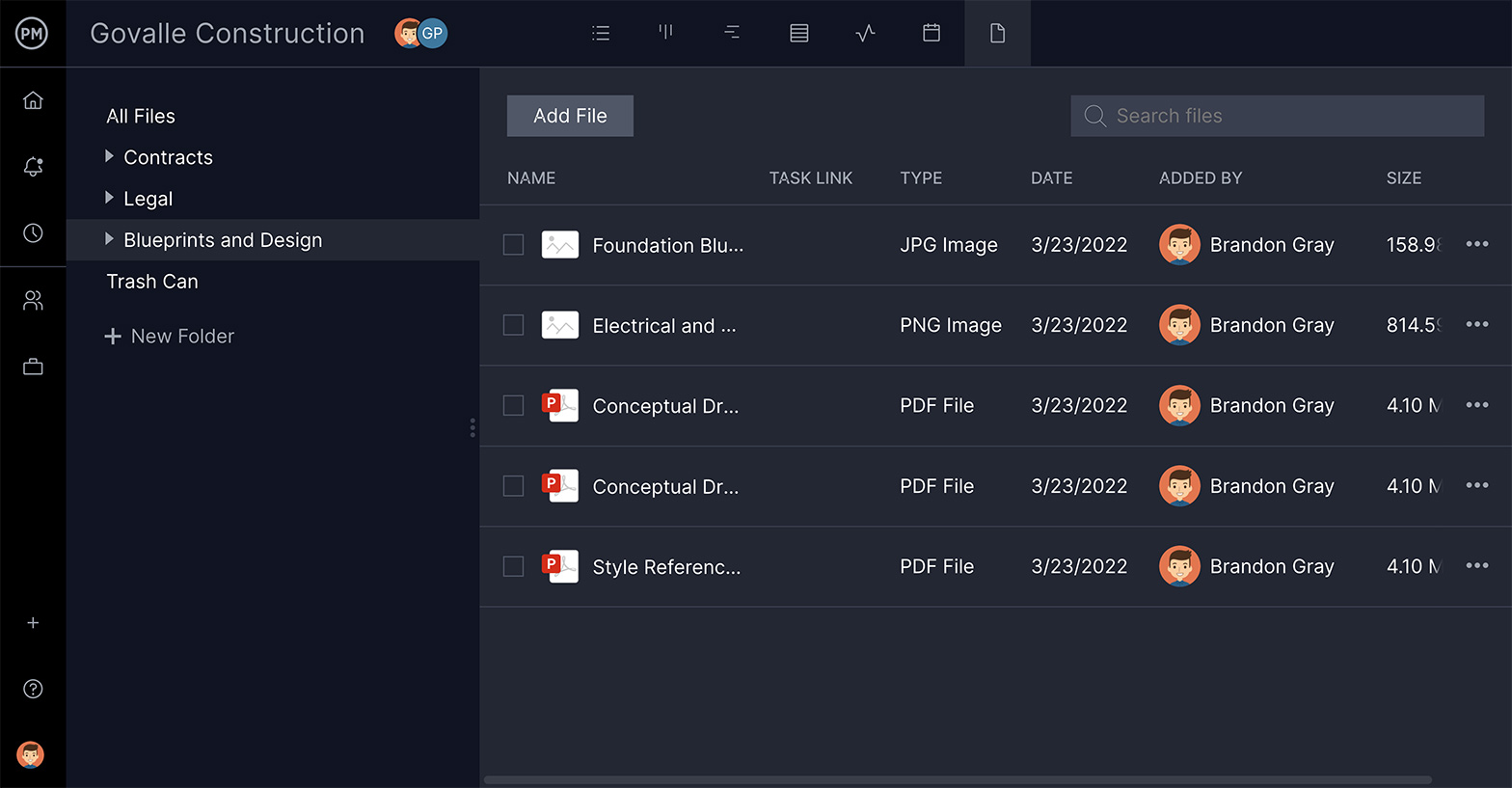
Plan & Schedule Work
When you plan your project, ProjectManager does the heavy lifting. An online Gantt chart helps you schedule by mapping all your tasks across a project timeline. Now you can link dependencies, set milestones and even start assigning team members.
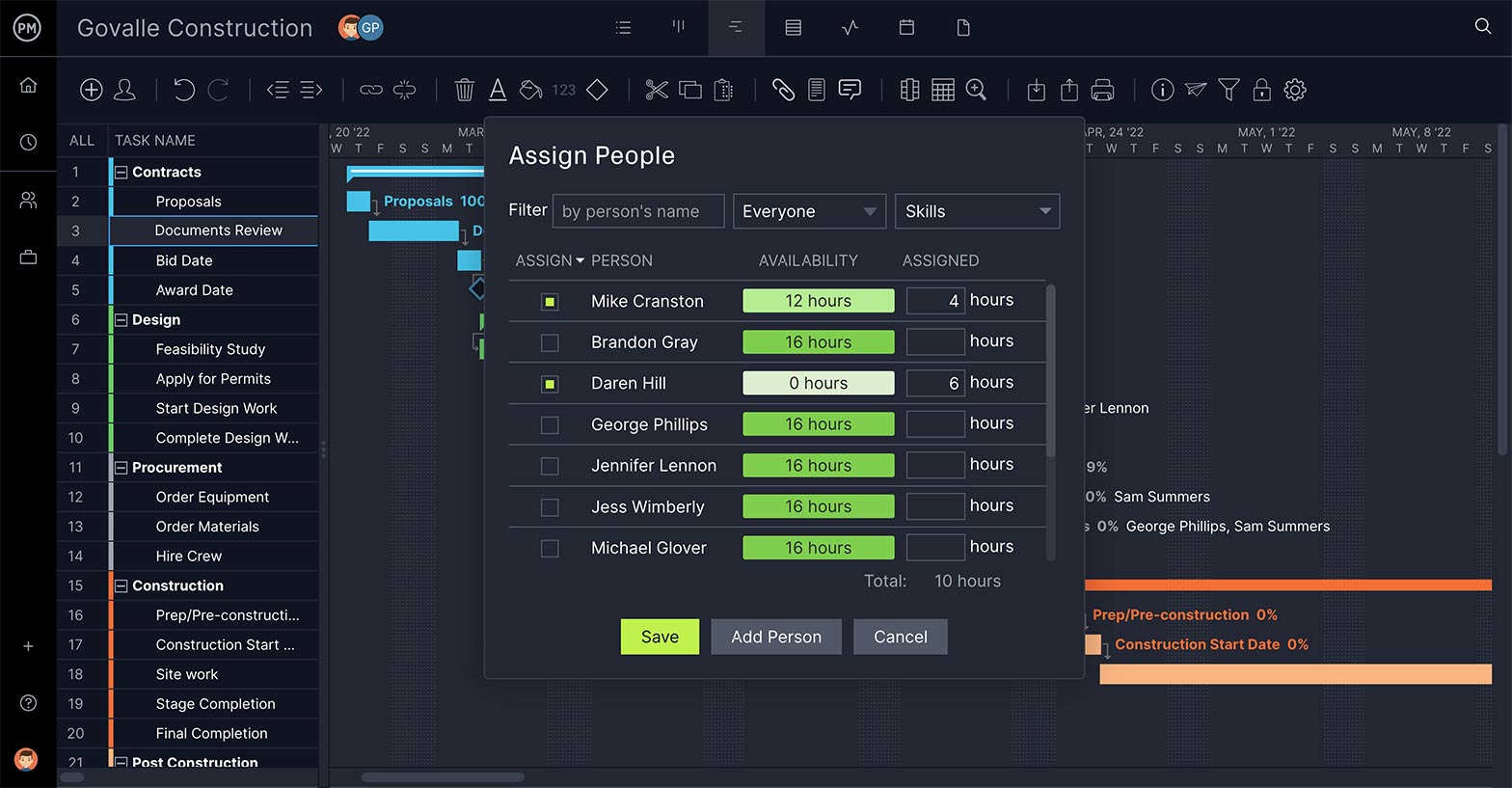
Monitor Progress
As teams execute their tasks, they can use ProjectManager’s tools to monitor and control their progress. Resource management features make sure that no one team member is carrying the entire load and their workload is balanced. Plus, our real-time dashboard can track progress, cost, health and more.

Of course, there’s more to project management than the information in this project management 101 article. It gets deep, and it’s constantly evolving. However, there’s one constant in the eye of the hurricane that’s managing a project: tools. ProjectManager is online project management software with real-time dashboards, online Gantt charts and features to manage workload, resources, schedules and every aspect of your project. See how it can help you succeed by taking this free 30-day trial today!

